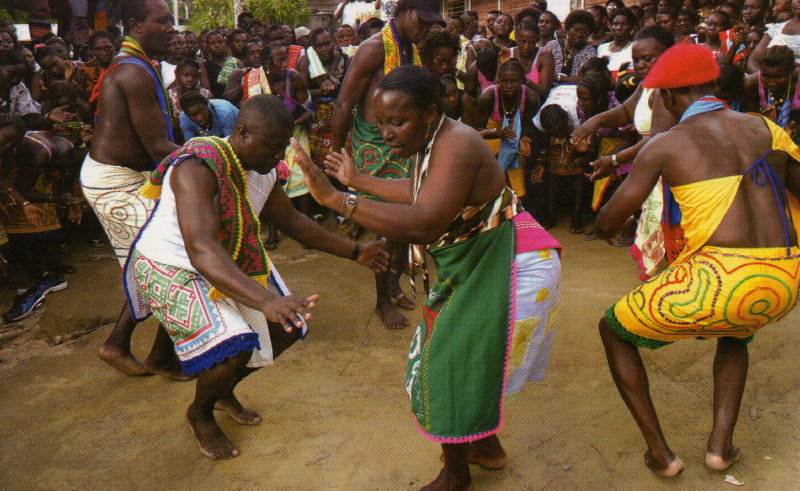Suriname, a small but culturally rich country in South America, is home to a vibrant and diverse array of traditional music and dance forms. From the rhythmic beats of the kawina music to the graceful movements of the kaseko dance, Suriname’s cultural heritage comes alive through its captivating performances. Immerse yourself in the dynamic rhythms and vibrant costumes as you explore the enchanting world of Suriname’s traditional music and dance forms. This article will take you on a journey through Suriname’s cultural landscape, shedding light on the significance and allure of these age-old art forms. Whether you are a music enthusiast or simply curious about different cultures, prepare to be captivated by the rich tapestry of Suriname’s traditional music and dance.
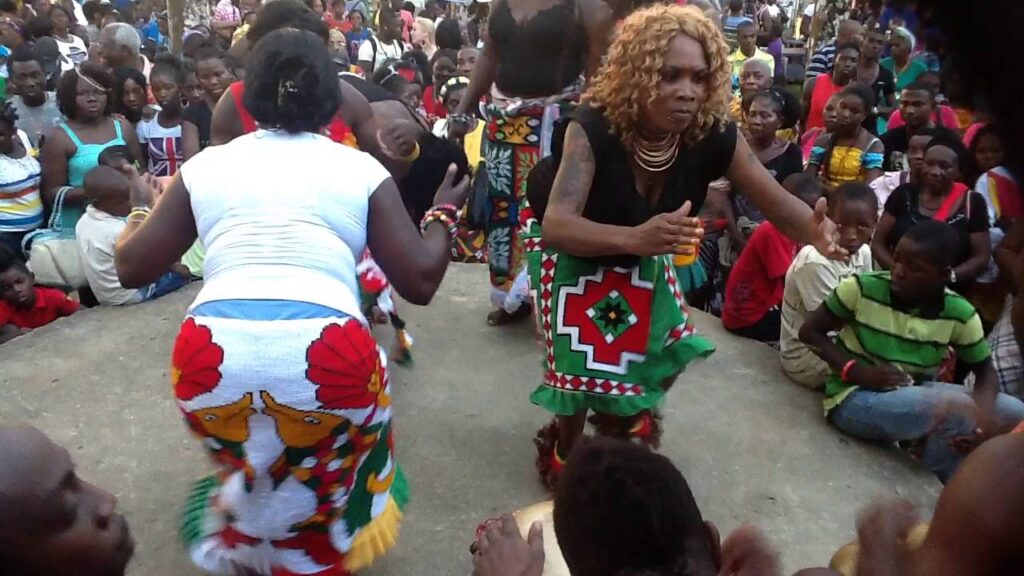
Traditional Music of Suriname
Introduction to traditional music
Suriname, a small country located on the northeastern coast of South America, is rich in cultural diversity and traditions. Traditional music is a vital part of Surinamese culture, showcasing the influences of African, Indigenous, European, Maroon, Indo-Surinamese, and Caribbean cultures. It serves as a means of expression, storytelling, and celebration, preserving the identity and history of the various communities that call Suriname home.
Influence of African rhythms
A significant influence on Surinamese traditional music comes from the African rhythms brought to the country through the transatlantic slave trade. The rhythms and percussion instruments, such as the tambu, kankantri, and skratjie, that were integral to African music were preserved and integrated into Surinamese music. These rhythms provide a vibrant and energetic foundation to many traditional music genres in Suriname.
Influence of Indigenous music
Another significant influence on Surinamese traditional music comes from the Indigenous people who have inhabited Suriname for thousands of years. Indigenous music is deeply connected to nature and spirituality, with melodies and rhythms reflecting their close relationship with the environment. Traditional instruments such as the keleman and karau provide unique and distinct sounds that contribute to the rich tapestry of Surinamese traditional music.
Influence of European melodies
The arrival of European colonizers in Suriname introduced European melodies that blended with African and Indigenous influences to create a distinct musical fusion. European instruments such as guitars, violins, and accordions were incorporated into traditional music, leading to the development of new genres and styles. European melodies added a touch of elegance and sophistication to Surinamese traditional music.
Traditional instruments used
Surinamese traditional music is characterized by a wide range of traditional instruments that are used to create unique sounds and rhythms. These instruments include the drums, such as the skratjie, tambu, and kankantri, which provide the driving force behind many traditional music genres. Other instruments like the keleman, karau, guitar, violin, and accordion add melody and harmony to the music, creating a dynamic and captivating musical experience.
Popular traditional music genres
There are several popular traditional music genres in Suriname, each representing different cultural influences and styles. One such genre is kawina, which originated from the Creole population and is known for its festive rhythm and lively dance styles. Other genres include winti, which is influenced by Indigenous and African traditions and is often performed during spiritual ceremonies, and bhojpuri, a genre influenced by Indo-Surinamese culture with its roots in Indian classical music.
Significance and cultural importance
Traditional music holds immense significance and cultural importance in Surinamese society. It serves as a medium for storytelling, passing down traditions and histories from generation to generation. It is also a form of cultural expression, allowing communities to showcase their unique identities and to celebrate their cultural heritage. Traditional music plays a vital role in community gatherings, celebrations, and religious and ceremonial events, reinforcing the bonds between individuals and their cultural roots.
Dance Forms of Suriname
Introduction to traditional dance forms
Just as traditional music is an integral part of Surinamese culture, so too are traditional dance forms. These dance forms are a visual representation of the cultural diversity and influences that shape Surinamese society. Through rhythmic movements, intricate footwork, and vibrant costumes, traditional dances bring stories, rituals, and emotions to life, captivating both performers and viewers.
African-inspired dances
The African influence on Surinamese traditional dances is undeniable. Dance forms such as the kawina dance, derived from African rhythms and movements, reflect the vibrant energy and celebratory nature of African culture. These dances often involve group participation, with dancers showcasing their agility, coordination, and passion through rhythmic footwork and expressive body movements.
Indigenous dance styles
Indigenous dance forms are deeply rooted in nature and spirituality, reflecting the connection between the Indigenous people and their environment. Through fluid movements, gestures, and storytelling, Indigenous dances portray the rich cultural heritage of the Indigenous communities in Suriname. These dances often incorporate elements like feathers, shells, and traditional attire to enhance the connection to nature.
European-influenced dances
European colonization brought with it dance forms bearing the influence of European traditions. Dances like the waltz and quadrille were introduced to Suriname and adopted by various communities, leading to unique interpretations and fusion with African and Indigenous elements. European-influenced dances provide a glimpse into Suriname’s colonial history and the assimilation of different cultures.
Traditional dance costumes
Traditional dance costumes in Suriname are elaborate and vibrant, reflecting the cultural identity and heritage they represent. African-inspired costumes often feature colorful fabrics, intricate beadwork, and traditional headdresses, while Indigenous costumes incorporate natural materials such as feathers, shells, and woven fibers. European-influenced costumes may include flowing skirts, intricate lacework, and stylish hats, showcasing the fusion of different cultures in Suriname.
Popular traditional dance forms
Suriname is home to a wide range of traditional dance forms that are celebrated and performed across the country. Some popular traditional dance forms include the kawina dance, which accompanies the lively rhythms of kawina music, the sérbé dance, known for its graceful and elegant movements, and the winti dance, performed during spiritual ceremonies to honor ancestors and connect with the spiritual world.
Religious and ceremonial dances
Religious and ceremonial dances play an essential role in Surinamese culture, serving as a way to connect with higher powers and to honor significant events and traditions. Whether it is the Hindu festivals of Diwali and Holi or the Christian celebrations of Christmas and Easter, dance forms like the chutney, tassa, and the Christian praise dances are performed with devotion and reverence, bringing communities together in celebration and worship.
Maroon Music and Dance
History and significance of Maroon culture
The Maroons in Suriname are descendants of African slaves who escaped from plantations during the colonial era. Maroon communities have preserved their cultural practices, including their music and dance, which are deeply rooted in their unique history and experiences of resistance. Maroon culture holds immense significance in Surinamese society, representing the strength, resilience, and spirit of freedom of the Maroon people.
Distinctive Maroon music styles
Maroon music is characterized by its distinctive rhythms, harmonies, and vocal styles. The music often features call-and-response patterns, where a lead singer is accompanied by a chorus, creating a dynamic and captivating sound. Maroon music incorporates percussion instruments such as the skratjie, kankantri, and drums made from hollowed-out tree trunks, producing deep, resonant beats that are central to Maroon music.
Influences from African traditions
Maroon music is a direct reflection of the African traditions and cultural practices that were brought to Suriname by enslaved Africans. The music carries the echoes of African rhythms, melodies, and storytelling techniques, providing a powerful connection to the African roots of the Maroon people. Through their music, Maroons have preserved and celebrated their African heritage, keeping their traditions alive for future generations.
Role of storytelling in Maroon music
Storytelling is an integral part of Maroon music, allowing the community to pass down history, folklore, and customs from one generation to another. Maroon songs often narrate stories of resistance, freedom, and the struggles faced by their ancestors. Through their music, Maroons keep their history alive and ensure that their collective memory and cultural heritage endure.
Traditional Maroon dance forms
Maroon dance forms are vibrant, energetic, and visually striking, expressing the strength and resilience of the Maroon people. These dances often incorporate rhythmic footwork, dynamic body movements, and symbolic gestures that depict ancestral traditions and celebrate the spirit of freedom. Maroon dance forms are dynamic and engaging, allowing the dancers to celebrate their cultural identity and history.
Celebrations and festivals
Maroon celebrations and festivals provide opportunities for the community to come together, rejoice, and showcase their traditions. One such celebration is the “Djuka Day,” commemorating the signing of a peace treaty between the Dutch colonizers and the Djuka Maroons. During these festivals, Maroon music and dance take center stage, with performances that captivate and inspire, reminding everyone of the rich cultural heritage of the Maroon people in Suriname.
Indigenous Music and Dance
Rich Indigenous musical heritage
Indigenous music in Suriname is deeply rooted in the spiritual beliefs, cultural practices, and connection to the natural world of the Indigenous communities. It is a vibrant and diverse musical heritage, with each community having its distinctive rhythms, melodies, and instruments. Indigenous music reflects the rich cultural diversity and history of Surinamese Indigenous people, as well as their enduring resilience and spirituality.
Rhythms and melodies in Indigenous music
Indigenous music is characterized by distinctive rhythms and melodies that convey the unique identity of each Indigenous community. The rhythms are often inspired by natural elements like flowing rivers, rustling leaves, and animal sounds, creating a musical language that harmonizes with the environment. The melodies reflect the spiritual connection of the Indigenous people to nature, evoking a sense of tranquility and reverence.
Connection to nature and spirituality
Indigenous music in Suriname serves as a means of connecting with nature and spirituality. It embodies the deep reverence and respect that Indigenous communities have for the natural world, often incorporating sounds and instruments that mimic the calls of birds or the whispers of the wind. Indigenous music is also an integral part of spiritual rituals and ceremonies, acting as a conduit between the physical and spiritual realms.
Traditional Indigenous dance styles
Indigenous dance forms in Suriname are rich in symbolism, storytelling, and spiritual expression. Each dance style tells a unique narrative, whether it be celebrating a successful harvest, invoking rain for the crops, or honoring ancestral spirits. The dance movements are often fluid, mimicking the movements of animals, and accompanied by rhythmic chanting or singing, creating a holistic sensory experience.
Costumes and accessories
Indigenous dance costumes and accessories play a significant role in the cultural expression and identity of Indigenous communities. These costumes are often adorned with natural materials such as feathers, shells, and woven fibers, reflecting the close connection to the environment. The accessories, such as headdresses and anklets, further enhance the visual representation of the dance and convey the cultural significance of the performance.
Ceremonial dance rituals
Indigenous communities in Suriname maintain rich ceremonial dance traditions that are integral to their spiritual practices. These dances are performed during significant rituals and ceremonies, such as initiations, healing ceremonies, and harvest festivals. Ceremonial dances serve as a means of connecting with ancestral spirits, seeking guidance from the divine, and reinforcing the bonds within the community.
Preservation efforts
Efforts are being made to preserve and promote the traditional music and dance of Indigenous communities in Suriname. Cultural organizations and educational institutions collaborate with Indigenous communities to document and pass down the knowledge and techniques of Indigenous music and dance. Festivals and cultural events provide platforms for Indigenous performers to showcase their talents and preserve their heritage in a rapidly changing world.
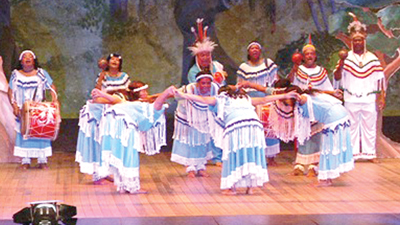
Kawina: Sounds of the Creoles
Origin and evolution of Kawina music
Kawina is a traditional music genre that originated from the Creole population in Suriname. It is known for its infectious rhythms, lively beats, and powerful vocal performances. Kawina emerged as a form of cultural expression for the Creole community, combining elements of African rhythms, European melodies, and Indigenous music traditions. Over time, Kawina has evolved and adapted, becoming a significant part of Surinamese cultural identity.
Creole influence on Surinamese music
The Creole population in Suriname played a crucial role in shaping the country’s music. With roots in African, European, and Indigenous traditions, Creole music has contributed to the diverse musical landscape in Suriname. Creole musicians brought a sense of rhythm, improvisation, and vocal prowess to Surinamese music, helping to establish unique genres like Kawina that showcase the shared cultural heritage of Surinamese Creoles.
Instruments used in Kawina
Kawina music is characterized by the vibrant sounds produced by a variety of traditional instruments. The skratjie, a friction drum made from animal skin stretched over a hollowed-out gourd or barrel, provides the driving rhythm and resonance that defines Kawina music. Other instruments include the tambu, which is a barrel-shaped drum, and the kankantri, a traditional string instrument. Together, these instruments create the distinctive soundscape of Kawina.
Characteristics of Kawina rhythm
Kawina music is known for its lively and infectious rhythm that inspires energetic and exuberant dancing. The rhythm is characterized by syncopated beats and a strong emphasis on the offbeat. This distinctive rhythm is created through the interplay between drums and percussion instruments, creating a dynamic and engaging sound that permeates the spirit of Kawina music.
Kawina dance styles
Kawina music is often accompanied by specific dance styles that are synonymous with its energetic beats. The dance styles are characterized by lively footwork, hip movements, and dynamic body coordination. Kawina dance involves intricate foot shuffling, body isolations, and expressive gestures. The dance styles provide a visual representation of the rhythm and spirit of Kawina music, making it an immersive and captivating experience.
Social and cultural contexts
Kawina music and dance play a significant role in social and cultural gatherings in Suriname. Whether it is a community celebration, a cultural event, or a festive carnival parade, Kawina is often at the heart of the festivities. The music brings people together, creating a sense of shared identity, collective joy, and cultural pride. Kawina serves as a reminder of the cultural diversity and heritage of Suriname, bridging generations and fostering unity among its people.
Indo-Surinamese Music and Dance
Introduction to Indo-Surinamese culture
The Indo-Surinamese community in Suriname comprises descendants of indentured laborers brought from the Indian subcontinent during the colonial era. Indo-Surinamese culture has had a profound impact on Surinamese music and dance, blending elements of Indian classical music, folk traditions, and Western influences. Indo-Surinamese music and dance reflect the cultural fusion that emerged from the complex history of the Indian diaspora in Suriname.
Influence of Indian classical music
Indian classical music, with its intricate melodies, rhythmic patterns, and improvisation, has left a significant imprint on Indo-Surinamese music. The Indian ragas, talas, and vocal techniques have influenced the development of traditional music genres such as bhojpuri and kirtan, forming the foundation for Indo-Surinamese music. The rich heritage of Indian classical music continues to be celebrated and preserved by the Indo-Surinamese community in Suriname.
Fusion of Indian and Western elements
Indo-Surinamese music has embraced Western influences, resulting in a unique fusion of Indian and Western elements. This fusion is evident in the use of Western musical instruments like guitars, keyboards, and drums, alongside traditional Indian instruments such as the harmonium and tabla. Indo-Surinamese music incorporates Western harmonies, chord progressions, and instrumental arrangements, giving it a contemporary and dynamic flavor.
Traditional Indo-Surinamese dance forms
Indo-Surinamese dance forms are deeply rooted in Indian classical dance traditions, with influences from the diverse folk dances of the Indian subcontinent. These dance forms, such as Kathak, Bharatanatyam, and Garba, have been adapted and evolved to suit the cultural context of Suriname. Indo-Surinamese dance styles showcase intricate footwork, graceful hand gestures, and expressive facial expressions, captivating audiences with their beauty and storytelling.
Bhojpuri music and dance
Bhojpuri is a traditional music and dance form that originated from the Bhojpuri-speaking regions of India. It has become an essential part of Indo-Surinamese cultural heritage. Bhojpuri music often features lyrical storytelling, poetic verses, and melodious tunes. Bhojpuri dance is characterized by lively footwork, rhythmic hand movements, and expressive facial expressions, creating a visual spectacle that complements the vibrant music.
Wedding and religious rituals
Indo-Surinamese music and dance play a significant role in weddings and religious rituals within the community. Weddings are grand affairs, with music and dance performances that celebrate the union of two families. Religious rituals, such as Hindu weddings and festivals, are marked by devotional singing, chanting, and intricate dance forms that are performed with reverence and spiritual dedication. Indo-Surinamese music and dance add a sense of joy, vibrancy, and cultural identity to these celebrations.
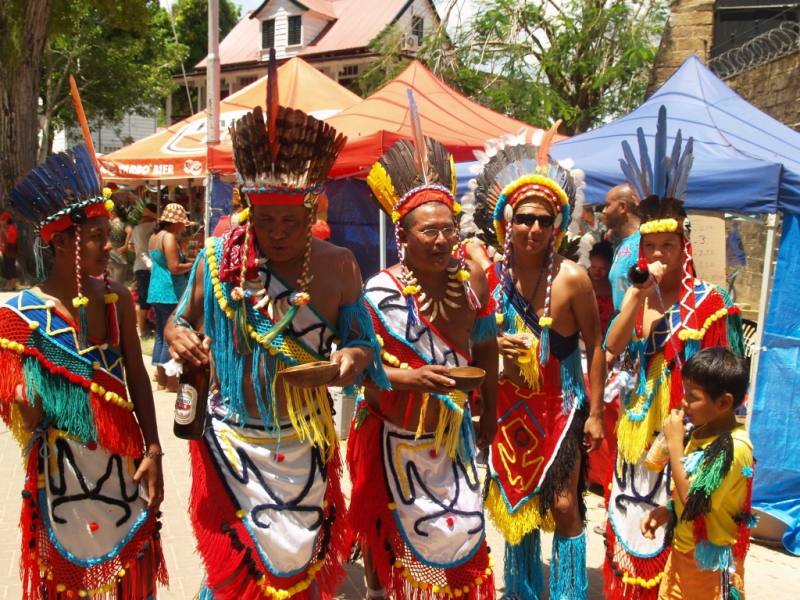
European Musical Legacy
Colonial influence on Surinamese music
The colonial era in Suriname introduced European musical traditions that influenced the development of Surinamese music. The Dutch, English, and French colonizers brought with them their own musical practices, instruments, and styles. These influences laid the groundwork for the fusion of European and African or Indigenous musical traditions, creating a unique Surinamese musical identity.
Importance of European musical traditions
European musical traditions, particularly those rooted in Classical and Baroque music, have had a lasting impact on Surinamese music. Elements of harmony, melody, and instrumentation from European music were integrated into traditional Surinamese music, creating genres that showcase a blend of European and African or Indigenous influences. European musical traditions helped to shape the composition and arrangement techniques used in Surinamese music.
Incorporation of European instruments
European colonizers introduced musical instruments such as guitars, violins, and accordions to Suriname, which became integral to the development of Surinamese music. These instruments were readily adopted and adapted by local musicians, resulting in the creation of new musical styles that combined Eastern and Western elements. The incorporation of European instruments widened the range of sound possibilities and enriched the musical landscape of Suriname.
Influence on Surinamese dance forms
European musical traditions also had an influence on Surinamese dance forms. European dances like the waltz, quadrille, and polka were introduced to Suriname and gradually adopted by various communities, leading to unique interpretations that incorporated African, Indigenous, or Indo-Surinamese elements. The fusion of European dance forms with traditional Surinamese dance styles created a diverse range of dance forms that are still performed and celebrated today.
Historical context and evolution
The European musical legacy in Suriname is deeply intertwined with its colonial history. The exchange of musical traditions between European colonizers, enslaved Africans, Indigenous communities, and later, indentured laborers from India, created a rich musical tapestry in Suriname. The fusion of musical influences over centuries resulted in the development of distinct Surinamese music genres and dance forms, reflecting the country’s multicultural heritage and historical evolution.
Religious Music and Dance
Surinamese religious diversity
Suriname is renowned for its religious diversity, with Christianity, Hinduism, and Islam being the major faiths practiced in the country. Each religion has its distinct music and dance traditions, which play a significant role in religious rituals, ceremonies, and devotional practices. Surinamese religious music and dance express the spiritual beliefs, devotion, and cultural traditions associated with each religion.
Christian music and dance traditions
Christianity has a strong presence in Suriname, and Christian music and dance are integral components of religious worship and celebrations. Hymns, gospel music, choirs, and Christian praise dances are common expressions of Christian faith in Suriname. These forms of music and dance foster a sense of community, spirituality, and praise, giving voice to the Christian values and beliefs held by Surinamese Christians.
Hindu religious music and dance
Hinduism is practiced by a significant portion of the Surinamese population, and Hindu religious music and dance are deeply rooted in Hindu rituals and traditions. Bhajans (devotional songs), kirtans (narrative songs), and mantras (chanting) are essential elements of Hindu religious music. Dance forms such as Kathak, Bharatanatyam, and Garba are performed during Hindu festivals and ceremonies, serving as a means of spiritual expression and worship.
Islamic spiritual music
Islamic spiritual music, known as nasheeds, holds a special place in Islamic religious practices in Suriname. Nasheeds are devotional hymns sung in praise of Allah and the Prophet Muhammad. They often convey messages of love, spirituality, and moral guidance. The rhythmic melodies and heartfelt lyrics of nasheeds create a serene and contemplative ambiance during religious gatherings and events.
Interfaith musical expressions
Suriname’s religious diversity has also given rise to unique interfaith musical expressions, where individuals from different religious backgrounds come together to share their musical talents. Interfaith choirs and musical ensembles perform during interfaith gatherings, national celebrations, and initiatives promoting peace and unity. These musical expressions bridge religious differences, fostering understanding, respect, and cooperation among Surinamese of diverse faiths.
Ritualistic performances
Religious music and dance in Suriname are deeply entrenched in ritualistic performances that mark significant events and occasions within each religious tradition. From baptism ceremonies in Christianity to Diwali celebrations in Hinduism and Eid al-Fitr observances in Islam, music and dance play an integral role in these rituals, adding a spiritual dimension and enhancing the sacredness of the occasions.
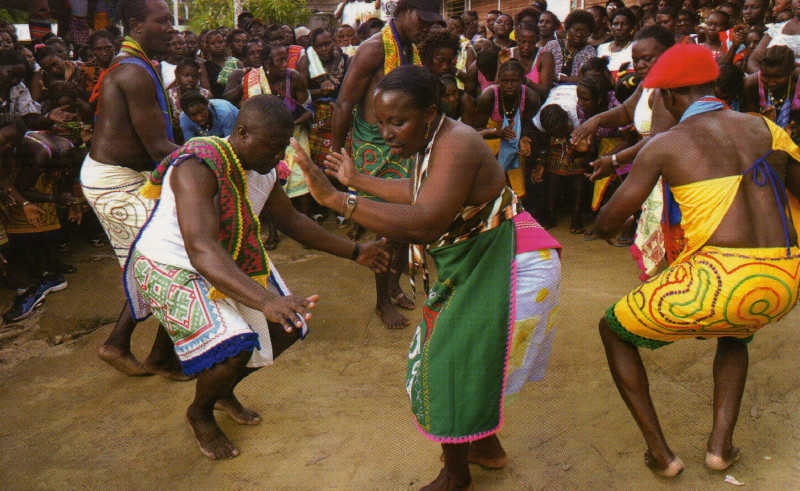
Influence of Caribbean Music
Geographical and cultural connections
Suriname’s geographical location on the northeastern coast of South America has facilitated close connections and cultural exchanges with other Caribbean countries. Suriname shares both land and maritime borders with several Caribbean nations, fostering the exchange of music, dance, and cultural practices. This intermingling of cultures has had a profound impact on Surinamese music, resulting in a rich blend of Caribbean influences.
Reggae and dancehall influences
Reggae and dancehall, two popular music genres originating from Jamaica, have had a significant influence on Surinamese music. The pulsating rhythms, catchy melodies, and socially conscious lyrics of reggae have resonated with Surinamese musicians and audiences alike. Dancehall, with its energetic beats and infectious dance moves, has influenced the dance styles and performances in Suriname, adding a vibrant Caribbean flavor to Surinamese music and dance culture.
Soca and calypso influences
Soca and calypso music, originating from Trinidad and Tobago, have also made a mark on Surinamese music and dance. The infectious rhythms, melodic hooks, and lively brass sections of soca and calypso have captured the spirit of Surinamese audiences, inspiring energetic dance movements and celebrations. Soca and calypso influences can be heard in Surinamese carnival music and the energetic dance styles performed during street parades.
Contemporary Caribbean fusion
Contemporary Caribbean fusion is a vibrant and evolving genre that blends various Caribbean music styles, including reggae, soca, calypso, zouk, and dancehall. Surinamese musicians and composers have embraced this fusion, incorporating elements of different Caribbean genres into their music. This fusion has given rise to a dynamic and eclectic music scene in Suriname, reflecting the country’s multicultural roots and its proximity to the Caribbean region.
Carnival and street parades
Carnival holds a special place in Surinamese culture, providing a platform for music and dance to thrive. Surinamese carnival music, characterized by high-energy rhythms, captivating melodies, and vibrant horn sections, fuels the celebratory atmosphere during the carnival season. Street parades showcase colorful costumes, energetic dance performances, and lively music, creating a spectacle that embodies the joy and spirit of Surinamese carnival culture.
Cross-cultural collaborations
The influence of Caribbean music on Surinamese music has also paved the way for cross-cultural collaborations and exchange of artistic ideas. Surinamese musicians and artists collaborate with Caribbean musicians, sharing their talents, perspectives, and cultural influences. These collaborations not only enrich the Surinamese music scene but also contribute to the broader Caribbean music ecosystem, fostering a sense of connection and unity among artists across the region.
Modern Innovations in Surinamese Music
Emergence of Surinamese pop music
Surinamese pop music has emerged as a prominent genre, encompassing diverse influences and styles. It blends traditional Surinamese music with contemporary global trends, creating a distinct and modern sound. Surinamese pop focuses on catchy melodies, infectious rhythms, and lyrics that reflect the social, cultural, and personal experiences of Surinamese youth.
Influence of global music trends
Global music trends have had a significant impact on modern Surinamese music. Surinamese musicians draw inspiration from various international genres like hip-hop, R&B, reggaeton, and pop. This exposure to global trends allows Surinamese artists to experiment with new sounds, production techniques, and lyrical themes, resulting in a dynamic and ever-evolving music landscape.
Integration of electronic elements
The integration of electronic elements in Surinamese music has become increasingly prevalent in recent years. Electronic genres like EDM, techno, and house have influenced the production and sound design of Surinamese music, giving rise to innovative and experimental approaches. The use of synthesizers, drum machines, and digital effects allows artists to push the boundaries of traditional Surinamese music and explore new sonic possibilities.
Experimental and alternative genres
Surinamese musicians are exploring experimental and alternative genres, pushing the boundaries of traditional music and embracing unconventional sounds and structures. From avant-garde jazz to experimental fusion, Surinamese artists are redefining the music scene, blending genres, and creating unique sonic landscapes. These experimental and alternative genres provide an avenue for artistic expression and cultural reflection in Suriname’s contemporary music scene.
Impact of technology and digital platforms
Technology and digital platforms have played a crucial role in the dissemination and promotion of Surinamese music. The rise of streaming platforms and social media has allowed Surinamese musicians to reach a wider audience, both domestically and internationally. Artists can share their music, collaborate with other musicians, and gain exposure without the traditional constraints of the music industry. Technology has empowered Surinamese musicians, enabling them to preserve their traditional roots while embracing modern innovations.
Continued preservation of traditional roots
Despite the embrace of modern innovations, Surinamese musicians remain committed to preserving their traditional roots. They understand the importance of cultural heritage and strive to incorporate traditional elements into their music. Traditional instruments, rhythms, melodies, and dance styles are still featured in contemporary Surinamese music, ensuring that the cultural heritage of Suriname remains alive and relevant. This balance between innovation and preservation allows Surinamese music to evolve while honoring its rich traditions.

